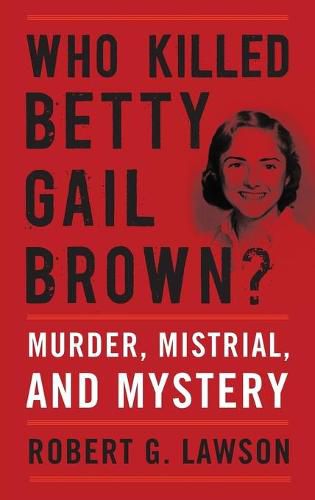Readings Newsletter
Become a Readings Member to make your shopping experience even easier.
Sign in or sign up for free!
You’re not far away from qualifying for FREE standard shipping within Australia
You’ve qualified for FREE standard shipping within Australia
The cart is loading…






This title is printed to order. This book may have been self-published. If so, we cannot guarantee the quality of the content. In the main most books will have gone through the editing process however some may not. We therefore suggest that you be aware of this before ordering this book. If in doubt check either the author or publisher’s details as we are unable to accept any returns unless they are faulty. Please contact us if you have any questions.
On October 26, 1961, after an evening of studying with friends on the campus of Transylvania University, nineteen-year-old student Betty Gail Brown got into her car around midnight – presumably headed for home. But she would never arrive. Three hours later, Brown was found dead in a driveway near the center of campus, strangled to death with her own brassiere. Kentuckians from across the state became engrossed in the proceedings as lead after lead went nowhere. Four years later, the police investigation completely stalled. In 1965, a drifter named Alex Arnold Jr. confessed to the killing while in jail on other charges in Oregon. Arnold was brought to Lexington, indicted for the murder of Betty Gail Brown, and put on trial, where he entered a plea of not guilty. Robert G. Lawson was a young attorney at a local firm when a senior member asked him to help defend Arnold, and he offers a meticulous record of the case in Who Killed Betty Gail Brown? During the trial, the courtroom was packed daily, but witnesses failed to produce any concrete evidence. Arnold was an alcoholic whose memory was unreliable, and his confused, inconsistent answers to questions about the night of the homicide did not add up. Since the trial, new leads have come and gone, but Betty Gail Brown’s murder remains unsolved. A written transcript of the court proceedings does not exist; and thus Lawson, drawing upon police and court records, newspaper articles, personal files, and his own notes, provides an invaluable record of one of Kentucky’s most famous cold cases.
$9.00 standard shipping within Australia
FREE standard shipping within Australia for orders over $100.00
Express & International shipping calculated at checkout
This title is printed to order. This book may have been self-published. If so, we cannot guarantee the quality of the content. In the main most books will have gone through the editing process however some may not. We therefore suggest that you be aware of this before ordering this book. If in doubt check either the author or publisher’s details as we are unable to accept any returns unless they are faulty. Please contact us if you have any questions.
On October 26, 1961, after an evening of studying with friends on the campus of Transylvania University, nineteen-year-old student Betty Gail Brown got into her car around midnight – presumably headed for home. But she would never arrive. Three hours later, Brown was found dead in a driveway near the center of campus, strangled to death with her own brassiere. Kentuckians from across the state became engrossed in the proceedings as lead after lead went nowhere. Four years later, the police investigation completely stalled. In 1965, a drifter named Alex Arnold Jr. confessed to the killing while in jail on other charges in Oregon. Arnold was brought to Lexington, indicted for the murder of Betty Gail Brown, and put on trial, where he entered a plea of not guilty. Robert G. Lawson was a young attorney at a local firm when a senior member asked him to help defend Arnold, and he offers a meticulous record of the case in Who Killed Betty Gail Brown? During the trial, the courtroom was packed daily, but witnesses failed to produce any concrete evidence. Arnold was an alcoholic whose memory was unreliable, and his confused, inconsistent answers to questions about the night of the homicide did not add up. Since the trial, new leads have come and gone, but Betty Gail Brown’s murder remains unsolved. A written transcript of the court proceedings does not exist; and thus Lawson, drawing upon police and court records, newspaper articles, personal files, and his own notes, provides an invaluable record of one of Kentucky’s most famous cold cases.